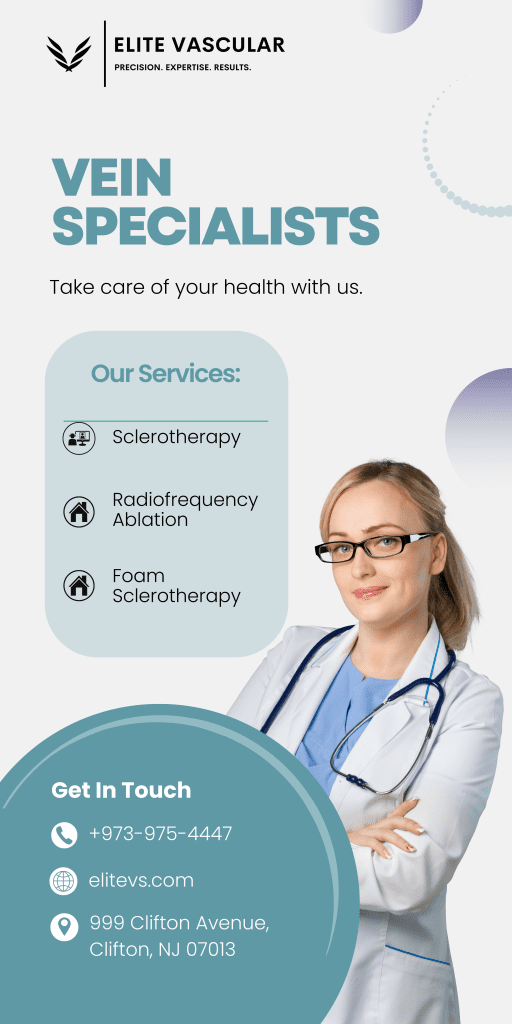
Saphenous veins are vascular channels that push blood back from the lower organs to the heart. Each leg contains a collection of saphenous veins. The veins coming in question are known as long spinach veins and short spinach veins respectively. The great saphenous vein, also called long caffeine vein, is the longest vein of the human body. It runs from foot to upper thigh.
The saphenous veins, like most other veins in your body, return deoxygenated blood to your heart. Many small veins in your legs and feet drain into the saphenous veins. The saphenous veins later supply this blood to the veins in your upper legs. From there, your blood continues upward to your inferior vena cava. This is a large vein that supplies blood directly to your heart.
Saphenous veins are part of the body’s circulatory system. Your circulatory system keeps your blood flowing in a continuous loop throughout your body. You are bleeding continuously. This is because it must deliver oxygen and nutrients to all your organs and tissues. This happens every minute of the day.
What common conditions affect the saphenous vein?
Vein disorders can cause damage to the saphenous veins or other veins in your legs. These problems prevent your nerves from working properly. Examples include:
- Varicose veins: These are swollen, raised veins that can be seen on the surface of the skin. They are usually harmless, but sometimes they can cause consequences such as skin ulcers.
- Chronic venous insufficiency (CVI): This problem develops when the one-way valves in the veins in your leg become damaged. Blood pools in your veins instead of flowing properly to your heart. This may cause swelling and pain in the affected leg.
- Superficial thrombophlebitis: A blood clot forms in a superficial vein under the skin.
Common signs or symptoms of saphenous vein problems
Problems with the saphenous or other leg veins can cause:
- Leg, ankle, and foot swelling after long standing, especially
- Pain or tenderness
- Achy, tired or throbbing legs
- Legs with a leathery appearance
- Itchy or flaky skin on your feet or legs
Tests that evaluate saphenous vein health
A physical exam will usually tell your provider if there is a problem with your saphenous vein. Your doctor may also perform a vascular ultrasound to learn more. They may also check your blood for signs of infection or clotting problems.
What are common treatments for the saphenous vein?
The condition determines the treatment, general treatment:
- Lifestyle changes: Varicose veins may be treated conservatively by your doctor. Elevating your legs and using compression stockings are examples. Your doctor may suggest more exercise.
- Sclerotherapy: A solution is injected into your varicose vein to help shrink it.
- Endovenous thermal ablation: Health care professionals use a catheter (tube) and laser to effectively seal the injured vein.
- Vein ligation and stripping: Surgeons tie up and remove damaged veins.
- Blood thinners: Your doctor may prescribe blood thinners for a blood clot.
Saphenous Vein Reflux
Most leg varicose veins are caused by saphenous vein reflux. “Saphenous” refers to the vein in the leg in the superficial compartment, just beneath the skin. The saphenous veins are hidden in the fat layer of the leg between the skin and muscles. Varicose veins arise from diseased saphenous veins. Abnormal saphenous vein branches appear as bulging varicose veins.
Everyone has saphenous veins in their legs. Normally healthy and productive, these veins return deoxygenated blood to the heart. Venous valves in the lumen of the vein push blood against gravity into healthy veins toward the heart. A continuous “conveyor belt” of valves directs blood flow.
However, diseased saphenous veins cause valve failure. The valves in the damaged vein break, allowing blood to back up. Here, gravity “wins” and the valves “lose.” Broken vein valves cause venous reflux disease or chronic venous insufficiency.
Venous reflux causes an unnatural increase in saphenous vein pressure. As pressure increases, more valves break and veins swell. The body finds new abnormal blood pathways to relieve this high abnormal pressure. Abnormal high pressure flow in the veins of the leg causes superficial veins to swell and become varicose.
High pressure in the leg veins causes pain, swelling, burning, heaviness, cramps, fatigue, itching and more. Irregular saphenous veins can cause leg circulatory disorders over many years.
More significant symptoms of vein reflux include excessive leg swelling, leg asymmetry, venous ulcers or sores in the ankles, severe skin damage, severe dermatitis, bleeding from the skin, blood clots, browning of the ankle and foot, and nerve damage /neuropathy.
Does the Leg Have Multiple Saphenous Veins?
Yes. There are many saphenous veins in the legs. The great saphenous vein of the leg is most commonly affected by saphenous vein reflux. Vein reflux can also affect the short, anterior, and posterior accessory saphenous veins of the leg. These other veins are less likely to cause reflux disease because the great saphenous vein has the strongest genetic predisposition to valve failure. Over time, valve reflux may move from the greater saphenous vein to other veins in the leg. Therefore, you should get your varicose veins and leg symptoms checked as soon as possible. As valved reflux spreads into the leg, treatment becomes more difficult.
Reason behind Saphenous Vein Reflux Develop
There are various causes of leg vein reflux. But gene inheritance is the most typical cause of this condition. This trait is highly penetrant and genetic. Most people with the disease inherit the disease from their parents or grandparents. Most of the people suffering from this disease have a parent or sibling suffering from this disease. Vein reflux can also be caused by a leg injury or blood clots, which damage the leg veins. Symptoms of varicose veins or leg veins may occur years after a trauma or clot. Saphenous vein reflux disease may intensify under certain settings. For example: pregnancy. Pregnancy accelerates venous reflux and varicose veins. Cashier, hairdresser, cosmetologist, and bank teller jobs require standing for long periods of time. Obesity can also aggravate the condition.
How can I diagnose saphenous vein reflux?
The only way to diagnose vein reflux is to visit a board-certified vein specialist. The doctor will initially check your feet for signs of disease. If vein reflux is suspected, the doctor may order a venous reflux ultrasound. If performed by a trained person, this test will identify if you have adequate saphenous vein reflux. Vein reflux testing requires competence and experience, so only highly qualified professionals should perform the test.
We recommend performing venous reflux ultrasonography at a vascular center with a registered vascular technologist or a registered physician in vascular interpretation. Other features have given us many false test results. RVT and RPVI have completed and analyzed thousands of these investigations. Our vascular ultrasound lab performs these evaluations with great confidence.
Saphenous Vein Reflux Therapies
Saphenous vein reflux is used to treat Orthodox and traditional methods. Non-procedural treatment methods include support stockings, leg elevation, exercise and nutritional supplements. This conservative strategy can’t treat the disease, but it can slow its progress and reduce symptoms. This approach is suitable for small-thick disorders.
Conservative treatment for vein reflux disease aims to cure it. Interventional therapy is usually reserved for moderate to severe saphenous vein reflux. Many cases of saphenous reflux can be cured with intervention. Interventional therapy seals damaged saphenous veins to redirect blood into healthy veins. More than 95% of these treatments work. According to medical studies, in most patients, closure of the defective saphenous veins restores normal circulation.
Following treatment methods address saphenous vein reflux:
- Radiofrequency ablation of the defective saphenous vein
- Laser ablation of the defective saphenous vein using the VenaCure EVLT catheter
- Chemical ablation of the defective saphenous vein using VenaSeal glue
- Chemical ablation of the defective saphenous vein using Varithena foam
- Mechanical-chemical ablation of the defective saphenous vein using the Clarivein device
- Traditional open surgery to remove the vein. This is rarely needed.
The responsibility of choosing the most suitable interventional therapy for your special illness and anatomy is of a board-certified vascular surgeon. Before choosing treatment for saphenous vein, it is necessary to consult a qualified doctor who is certified by the right board.
For any vein issues ask the professionals
If you facing any veins related problem, ask our top vein experts for permanent solution. Book an appointment today or call us at +1-973-975-4447.

